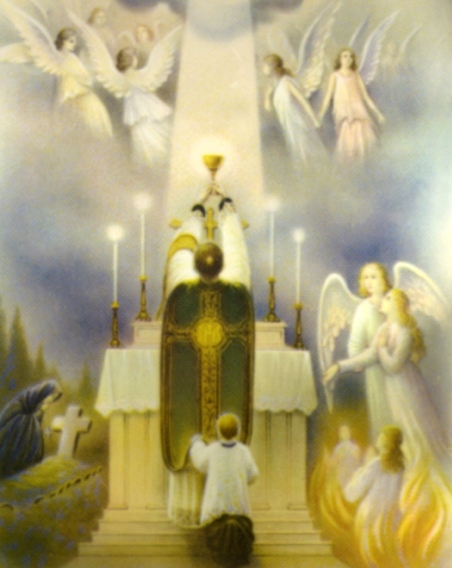Liturgical Time Bombs
in Vatican II: Excerpts
The Destruction of Catholic Faith
Through Changes in Catholic Worship
by Michael Davies
TAN BOOKS
Published on the Web with Permission of the Author.
Destruction of the Roman Rite and Loss of Faith
Destruction of the Roman Rite
Father Louis Bouyer, devastated by the contrast between what, as a leading member of the Liturgical Movement, he had hoped the implementation of the CSL would achieve, and what it did in fact achieve, had the integrity to state:
We must speak plainly: there is practically no liturgy worthy of the name today in the Catholic Church. [Bouyer, p. 99.]
At this critical juncture, the traditional Roman rite, more than one thousand years old, has been destroyed. [Gamber, p. 99.]
Let those who like myself have known and sung a Latin-Gregorian High Mass remember it if they can. Let them compare it with the Mass that we now have. Not only the words, the melodies, and some of the gestures are different. To tell the truth, it is a different liturgy of the Mass. This needs to be said without ambiguity: the Roman Rite as we knew it no longer exists (le rite romain tel que nous l'avons connu n'existe plus). It has been destroyed (il est détruit). [Gelineau, pp. 9-10.]
The real destruction of the traditional Mass, of the traditional Roman rite with a history of more than one thousand years, is the wholesale destruction of the Faith on which it was based, a Faith that had been the source of our piety and of our courage to bear witness to Christ and His Church, the inspiration of countless Catholics over many centuries. Will someone, some day, be able to say the same thing about the new Mass? [Gamber, p. 102.]
The radical and deliberate alteration of ritual leads inevitably to the radical alteration of belief as well. This radical alteration causes an immediate loss of contact with the living past of the community, which comes instead to be a deadening burden. The desire to shed the burden of the past is incompatible with Catholicism, which accepts history as an organic development from ancient roots and expresses this acceptance in a deep respect for Tradition." [James Hitchcock, The Recovery of the Sacred (New York: Seabury Press, 1974), p. 59.]
The most evident instance of the fact that the radical alteration of ritual leads to the radical alteration of belief is, of course, the reform of the apostate Thomas Cranmer. In his classic history of the Reformation in England, Monsignor Philip Hughes explains:
All but insensibly, as the years went by, the beliefs enshrined in the old, and now disused, rites, and kept alive by these rites in men's minds and affections, would disappear-----without the need of any systematic missionary effort to preach them down." [Philip Hughes, The Reformation in England, vol. II (London: Hollis & Carter, 1953), p. 111.]

During the 45-year reign of Elizabeth I, belief in the
Real Presence among English Catholics was transformed into belief in
the
real absence. This is already becoming the case in the English-speaking
world within four decades of what a Monsignor friend of mine calls the
Second Vatican Disaster.
The Mass That Will Not Die
The beauty, the worth, the perfection of the Traditional Latin Mass of the Catholic Church, so universally acknowledged and admired, was described by Fr. Faber in his book The Blessed Sacrament as "the most beautiful thing this side of Heaven." He continues:
It came forth out of the grand mind of the Church, and lifted us out of earth and out of self, and wrapped us round in a cloud of mystical sweetness and the sublimities of a more than angelic liturgy, and purified us almost without ourselves, and charmed us with celestial charming, so that our very senses seem to find vision, hearing, fragrance, taste and touch beyond what earth can give. [Cited in N. Gihr, The Holy Sacrifice of the Mass (St. Louis, MO: B. Herder, 1908), p.337.]
Archbishop Bugnini intended to consign this angelic liturgy to oblivion. However, this rite of Mass, which Cardinal Newman said that he could attend forever and not be tired, has proved to be the Mass that will not die. It is celebrated more often with every day that passes, and all those who have a true sensus catholicus, a Catholic instinct, will concur with Msgr. Gamber:
In the final analysis, this means that in the future the traditional rite of Mass must be retained in the Roman Catholic Church . . . as the primary liturgical form for the celebration of Mass. It must become once more the norm of our faith and the symbol of Catholic unity throughout the world, a rock of stability in a period of upheaval and never-ending change. [Gamber, p. 114.]
HOME------------------- HOLY
EUCHARIST

